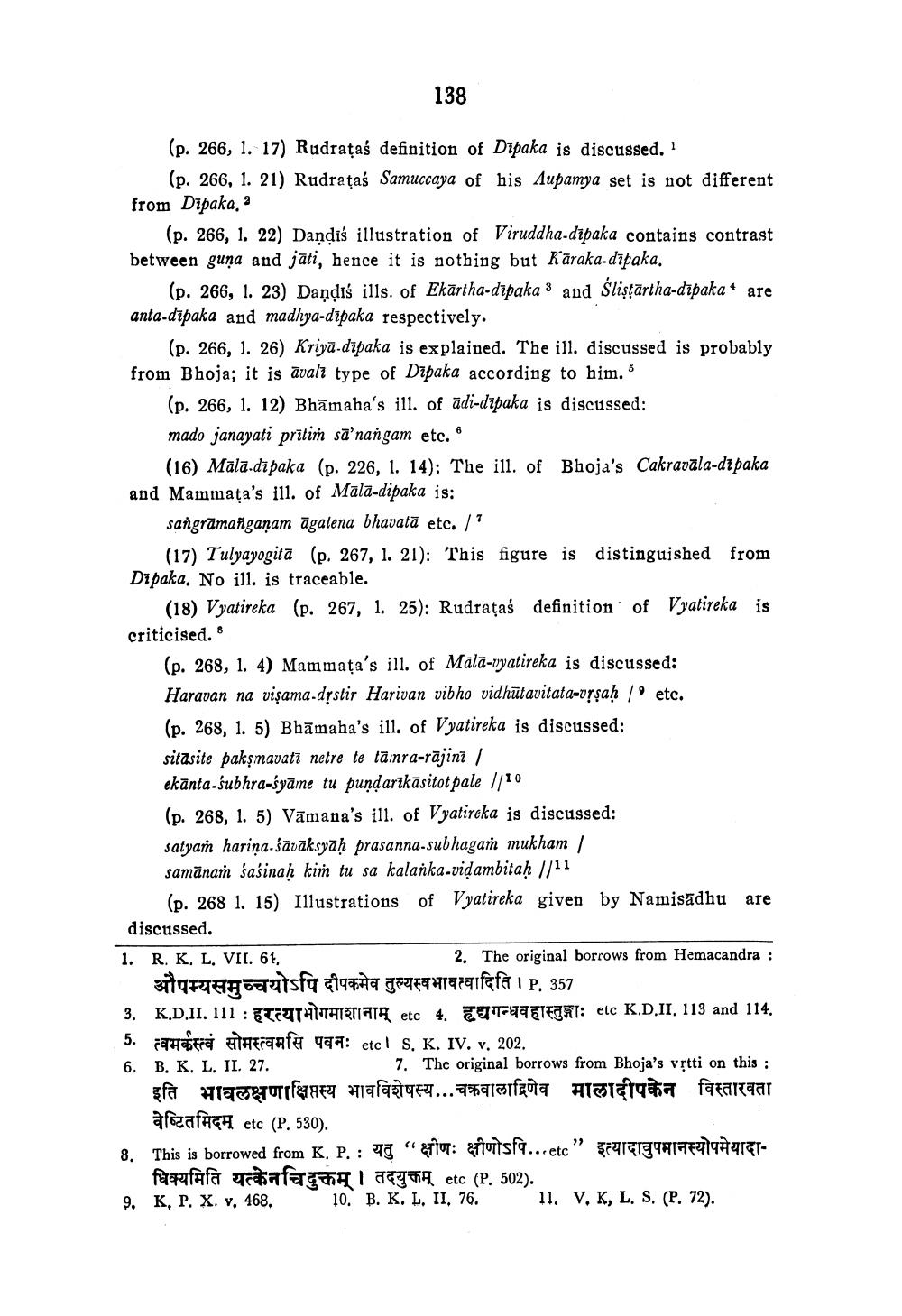________________ 138 (p. 266, 1. 17) Rudratas definition of Dipaka is discussed. (p. 266, 1. 21) Rudratas Samuccaya of his Aupamya set is not different from Dipaka, (p. 266, 1. 22) Dandis illustration of Viruddha-dipaka contains contrast between guna and jati, hence it is nothing but Karaka.dipaka, (p. 266, 1. 23) Dandis ills. of Ekartha-dipaka : and Slistartha-dipaka * are anta-dipaka and madhya-dipaka respectively. (p. 266, 1. 26) Kriya.dipaka is explained. The ill. discussed is probably from Bhoja; it is avali type of Dipaka according to him. (p. 266. 1. 12) Bhamaha's ill. of adi-dipaka is discussed: mado janayati prilim sa'nangam etc. (16) Mala.dipaka (p. 226, 1. 14): The ill. of Bhoja's Cakravala-dipaka and Mammata's ill. of Mala-dipaka is: sangramanganam agatena bhavata etc. /? (17) Tulyayogita (p. 267, 1. 21): This figure is distinguished from Dipaka. No ill. is traceable. (18) Vyatireka (p. 267, 1. 25): Rudratas definition of Vyatireka is criticised. (p. 268, 1. 4) Mammata's ill. of Mala-vyatireka is discussed: Haravan na visama.dustir Harivan vibho vidhutavitata-vrsah 1deg etc. (p. 268, 1. 5) Bhamaha's ill. of Vyatireka is discussed: sitasite paksmavati netre te tamra-rajini / ekanta-subhra-syame tu pundarikasitot pale 1/10 (p. 268, 1. 5) Vamana's ill. of Vyatireka is discussed: satyam harina- savaksyah prasanna-subhagam mukham samanam Sasinah kim tu sa kalanka-vidambitah 1/11 (p. 268 1. 15) Illustrations of Vyatireka given by Namisadhu are discussed. 1. R. K, L, VII. 61, 2. The original borrows from Hemacandra : SQFTAHautsfa sinna gegethracaifefat i P. 357 3. K.D.II. 111 : TTFUTATTARTIATA etc 4. Z T79516dki: etc K.D.II, 113 and 114, 5. Her taraf# 999: etc! S, K. IV. v. 202. 6. B. K, L. II. 27. 7. The original borrows from Bhoja's vrtti on this : इति भावलक्षणाक्षिप्तस्य भावविशेषस्य...चक्रवालाद्रिणेव मालादीपकेन विस्तारवता afecafach etc (P. 530). 8. This is borrowed from K. P. : 7 "elut: futsfa...etc" FATETE THIAFI#4781 fagfafa afer I a m etc (P. 502). 9, K, P. X. v. 468. 10. B. K. L. II. 76. 11. V. K, L, S. (P. 72).




